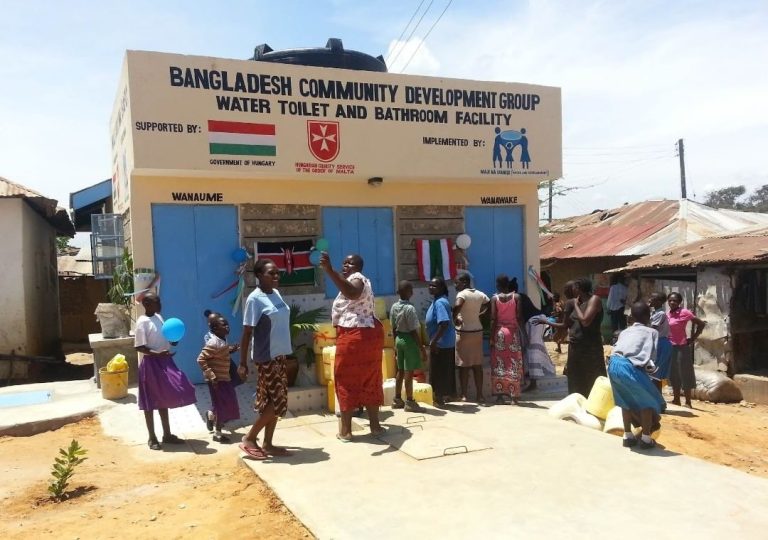A Stakeholder-Led Approach to Social and Educational Integration for Children with Disabilities in Jomvu, Mombasa
Children living with disabilities in Kenya’s informal settlements face significant barriers—both visible and invisible—that hinder their right to a dignified life. Inadequate healthcare, inaccessible schools, social stigma, and weak referral systems create a cycle of neglect, isolation, and poverty. One such community facing these challenges is Bogobogo, a rapidly growing informal settlement in Jomvu Sub-County, Mombasa County.
To address these systemic gaps, a multi-stakeholder initiative titled “Social and Educational Integration for Children with Disabilities in Bogobogo Informal Settlement” has been launched. The project, supported by the Association for the Physically Disabled of Kenya (APDK), Maji na Ufanisi (MNU), and the Hungarian Charity Service of the Order of Malta (HCSOM), seeks to build a foundation for disability-inclusive community development in Bogobogo.
Through stakeholder meetings, targeted training programs, and a coordinated community-based strategy, the initiative aims to ensure that no child is left behind in access to health, education, and social support.
The Vision Behind the Project
This pioneering initiative is anchored in the belief that inclusion begins at the community level. Informal settlements like Bogobogo have long been overlooked in mainstream development programs. Despite being home to thousands of families, these areas often lack formal health infrastructure, inclusive schools, or specialized disability services.
The project’s overarching goal is to:
- Integrate children with disabilities into the school system and other community-based services,
- Train and equip local frontline actors, especially Community Health Promoters (CHPs) and teachers,
- Establish sustainable referral mechanisms for therapy, assistive devices, and psychosocial support,
- Mobilize communities to reduce stigma and promote the rights of children with disabilities.
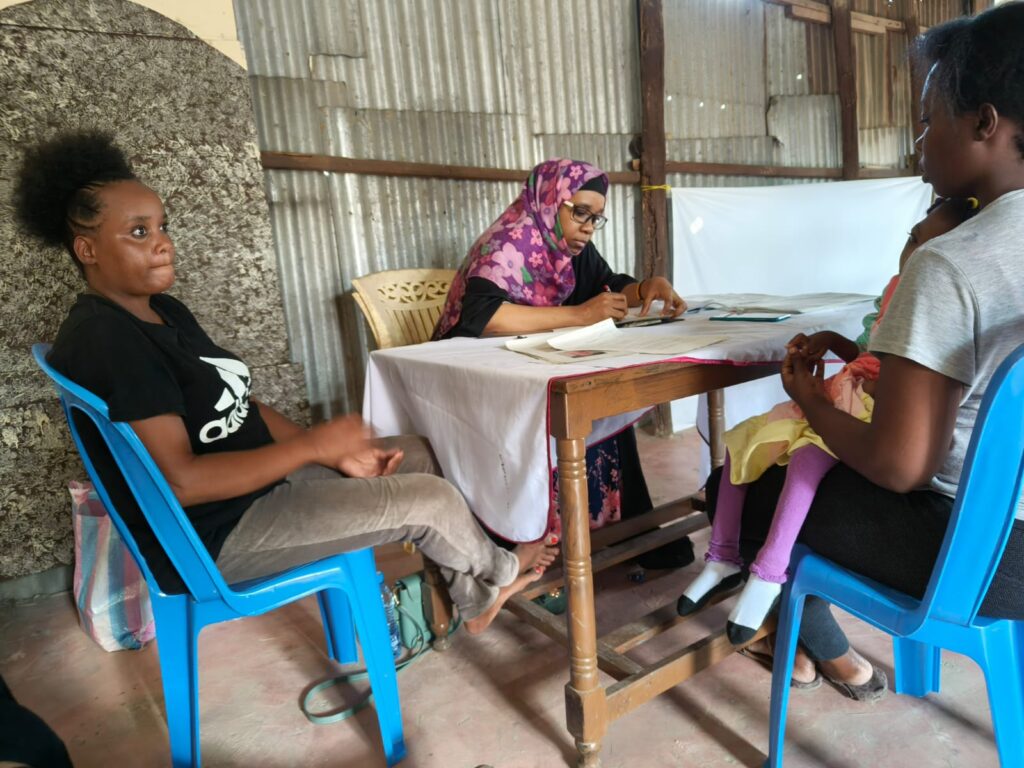
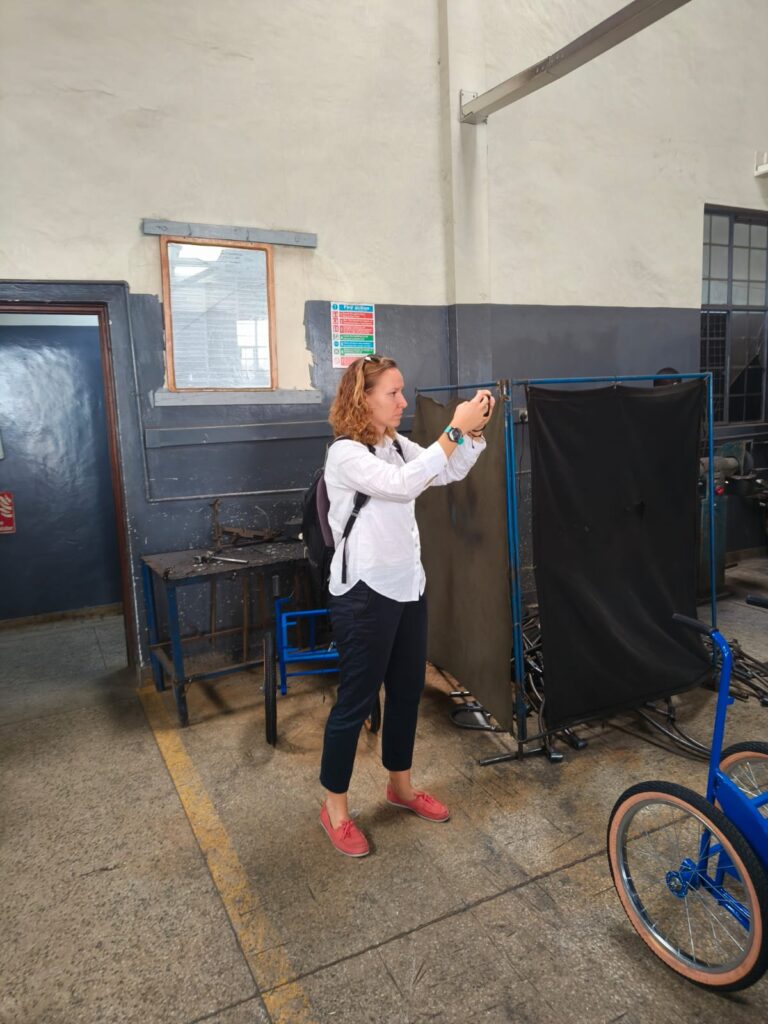
Stakeholder Meeting: Aligning Vision, Roles, and Commitment
At the heart of the project’s design is a strong stakeholder engagement process that ensures alignment of local actors with development partners and government authorities.
Key Objectives of the Stakeholder Meeting:
- Introduce the project’s objectives, timeline, and expected outcomes,
- Map existing services and identify critical gaps,
- Define stakeholder roles and responsibilities,
- Build consensus around the model for school and community-based disability inclusion,
- Establish referral pathways and communication channels among partners.
Participants Included:
- Officials from Mombasa County Government (Departments of Education, Health, and Social Services),
- Representatives from local schools, including New Hope Lite Academy,
- Community Health Promoters (CHPs) from Bogobogo,
- Parents and caregivers of children with disabilities,
- Disability rights advocates and social workers,
- Project teams from APDK, MNU, and HCSOM.
The meeting laid the foundation for intersectoral coordination, a vital component in delivering sustainable support to children with disabilities. It also established a shared commitment to tracking progress through regular field reviews and community feedback.
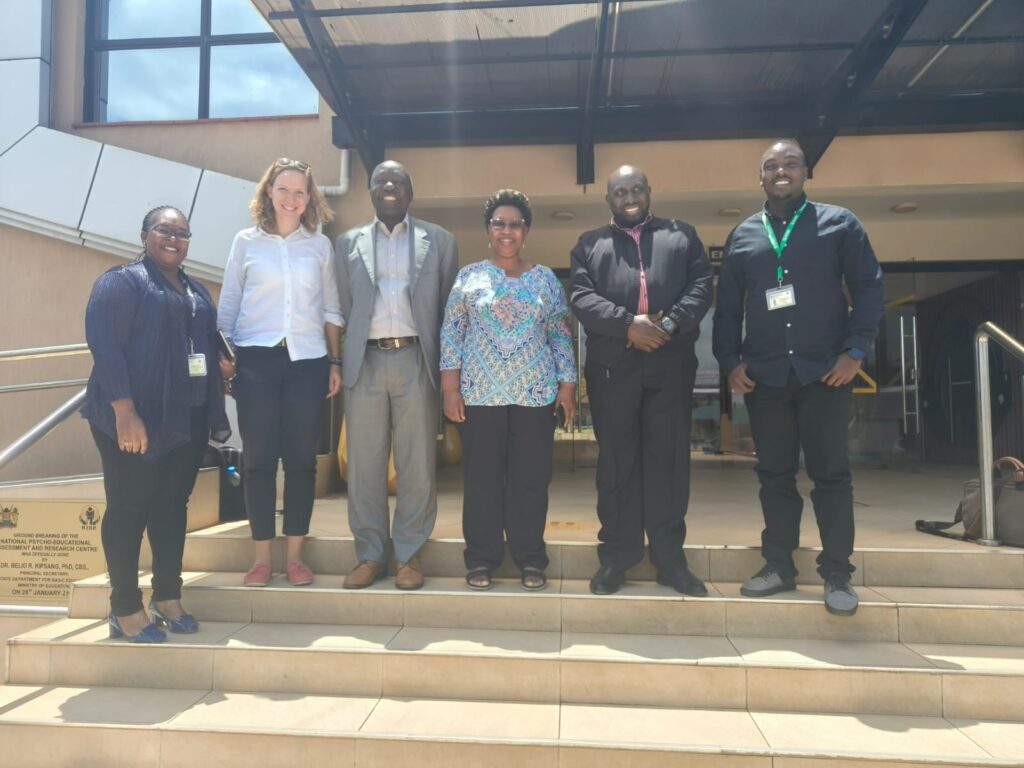
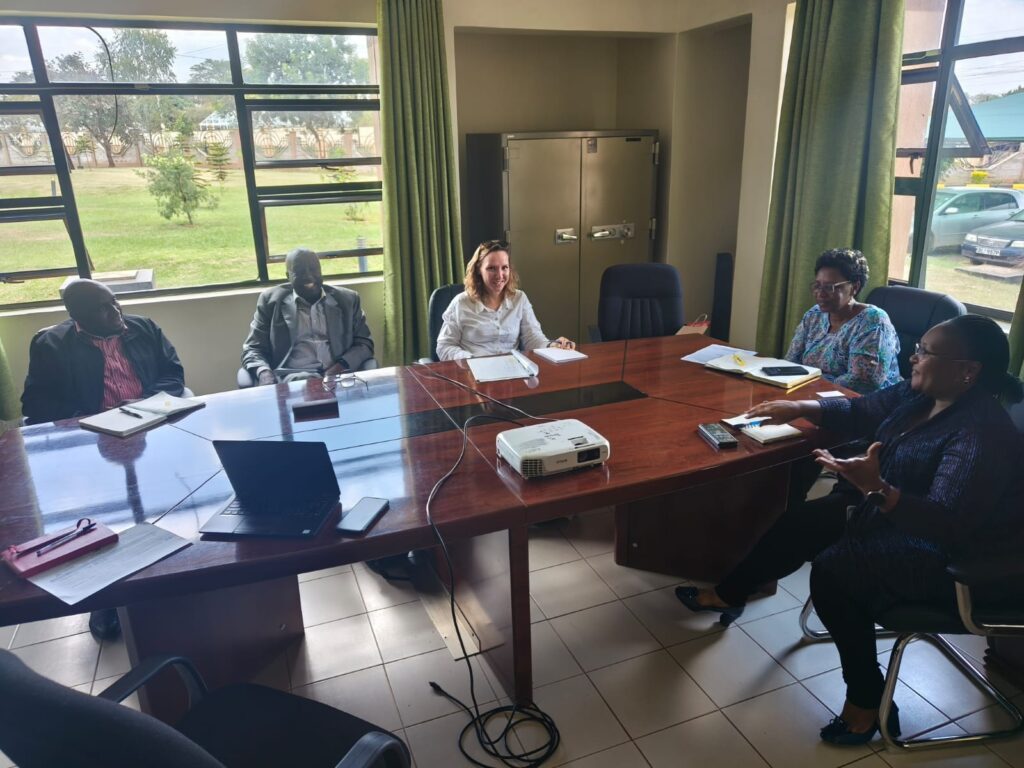
The Role of Each Partner Organization
APDK – Technical and Medical Leadership
As a leading organization in Kenya’s disability sector, APDK is responsible for:
- Conducting screening assessments for children suspected of having disabilities,
- Providing assistive devices such as wheelchairs, crutches, walkers, and hearing aids,
- Offering rehabilitation and physiotherapy services,
- Training caregivers and CHPs on home-based disability care,
- Linking families to their broader outpatient network across the coast region.
Maji na Ufanisi (MNU) – Local Anchor and Mobilizer
MNU has been working in Mombasa for decades, with a strong footprint in WASH, youth empowerment, and rights-based advocacy. Their contributions include:
- Coordinating community entry and sensitization in Bogobogo,
- Identifying and mobilizing local CHPs for training,
- Connecting project activities with existing county health systems,
- Organizing outreach and awareness activities around disability inclusion.
HCSOM – Financial and Strategic Backbone
The Hungarian Charity Service of the Order of Malta (HCSOM) is a globally active humanitarian agency. In this project, their role is to:
- Provide funding and technical assistance,
- Contribute global best practices in community-based rehabilitation (CBR),
- Support training content development,
- Ensure monitoring, evaluation, and reporting in collaboration with local partners.
Training and Capacity Building for Frontline Actors
One of the project’s key activities has been the training and capacity building of CHPs and teachers—two critical community-based actors in delivering inclusive services.
Objective:
To enhance the capacity of CHPs from Kibarani (Bogobogo) and teachers from New Hope Lite Academy to effectively identify, support, and refer children living with disabilities in alignment with both the project’s goals and the broader disability-inclusive development agenda.
Training Sessions: Structure and Content
Training 1: Foundations of Disability Inclusion
- Introduction to disability as a human rights issue
- Differences between the medical and social models of disability
- Common types of disabilities (physical, sensory, intellectual, developmental)
- Overview of UNCRPD and Kenya’s Persons with Disabilities Act
- Importance of early identification and intervention
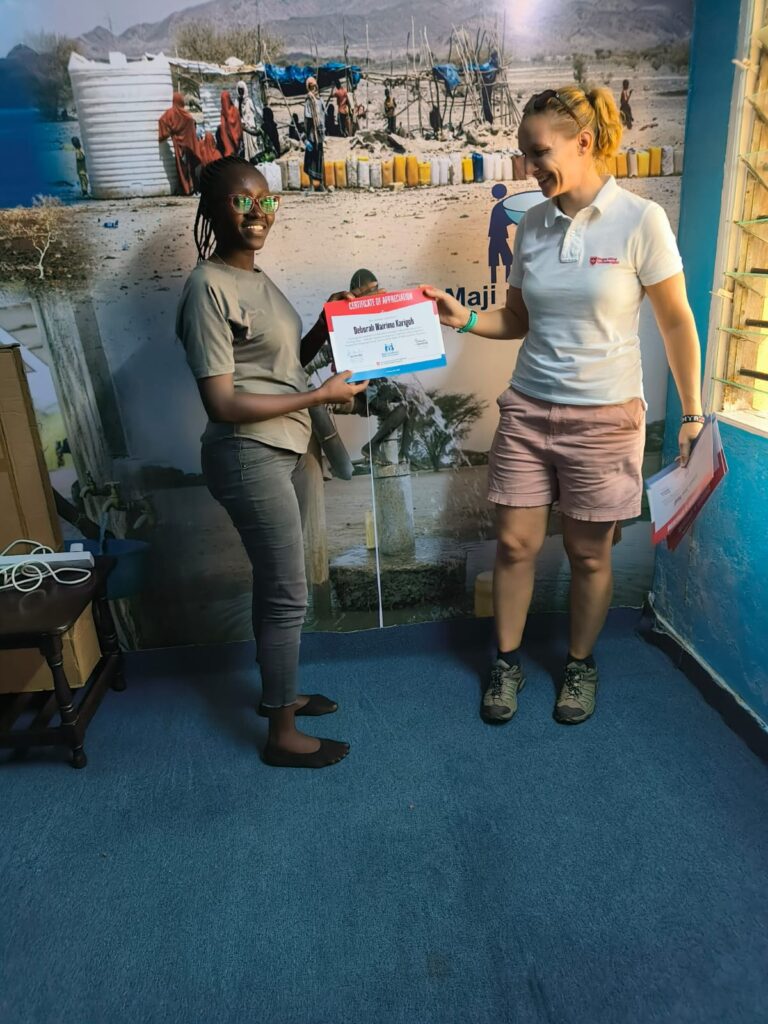
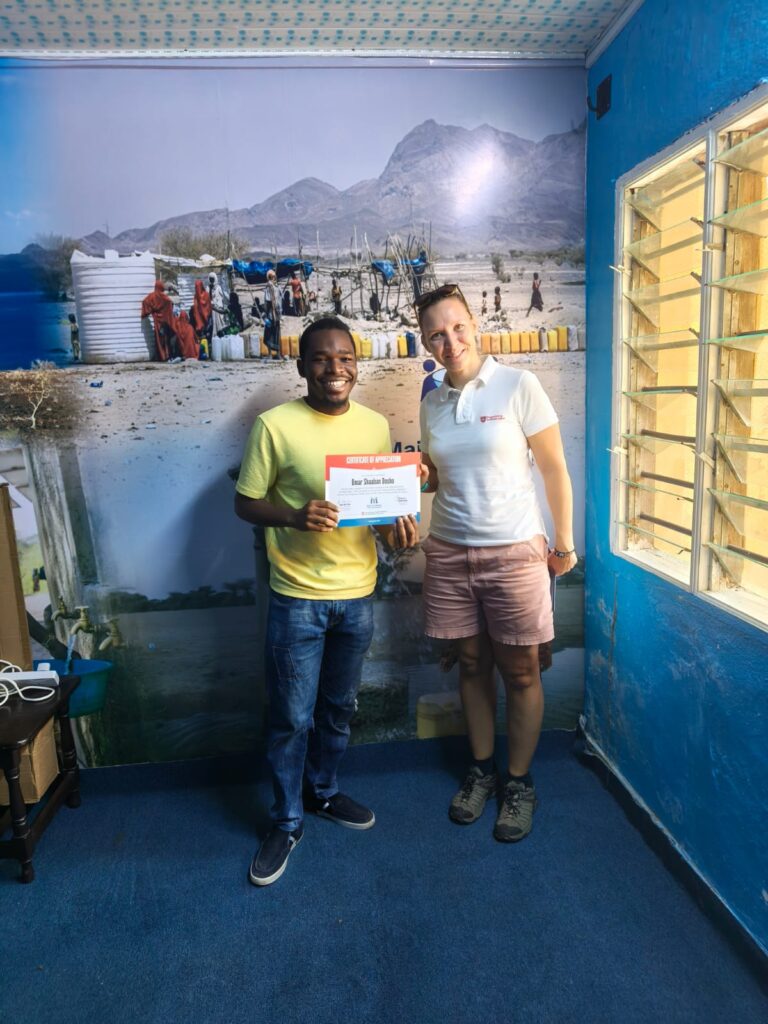
Training 2: Practical Tools for CHPs and Educators
- Techniques for screening and recognizing developmental delays
- How to approach parents and caregivers with sensitivity
- Overview of classroom accommodations and inclusive teaching strategies
- Coordinating referrals to APDK, schools, or health clinics
- Documentation and monitoring of cases
Delivery Format:
- Interactive virtual training using Zoom
- Language support (English and Kiswahili)
- Case studies and breakout discussions
- Post-training support via WhatsApp groups
- Distribution of printed toolkits and checklists
These sessions were not just informational—they were transformative. Many CHPs expressed renewed motivation and confidence to serve as local advocates for disability rights, while teachers committed to creating more inclusive classrooms.
Community Impact and Early Wins
Following the training and planning sessions, several important outcomes have already emerged:
- Referral pathways established: CHPs now use customized referral forms to link families to APDK clinics.
- Community trust built: Parents who previously hid children with disabilities are now seeking help.
- Inclusive schools emerging: Teachers at New Hope Lite Academy are piloting disability-inclusive lesson planning.
- Awareness increasing: Public barazas and house-to-house visits by CHPs have sensitized hundreds of households.
- Monitoring tools deployed: Baseline forms now help track children’s progress across education and therapy milestones.
Local Ownership and Sustainability
One of the project’s strongest features is its focus on local ownership. Instead of importing external staff or relying solely on donor-driven timelines, the initiative:
- Trains and empowers existing local health and education workers,
- Involves parents and caregivers as key participants,
- Engages with county officials to embed project lessons into public health and education policy.
This approach aligns with the UN Sustainable Development Goals (SDGs), particularly:
- Goal 3: Ensure healthy lives and promote well-being for all
- Goal 4: Ensure inclusive and equitable quality education
- Goal 10: Reduce inequality within and among countries

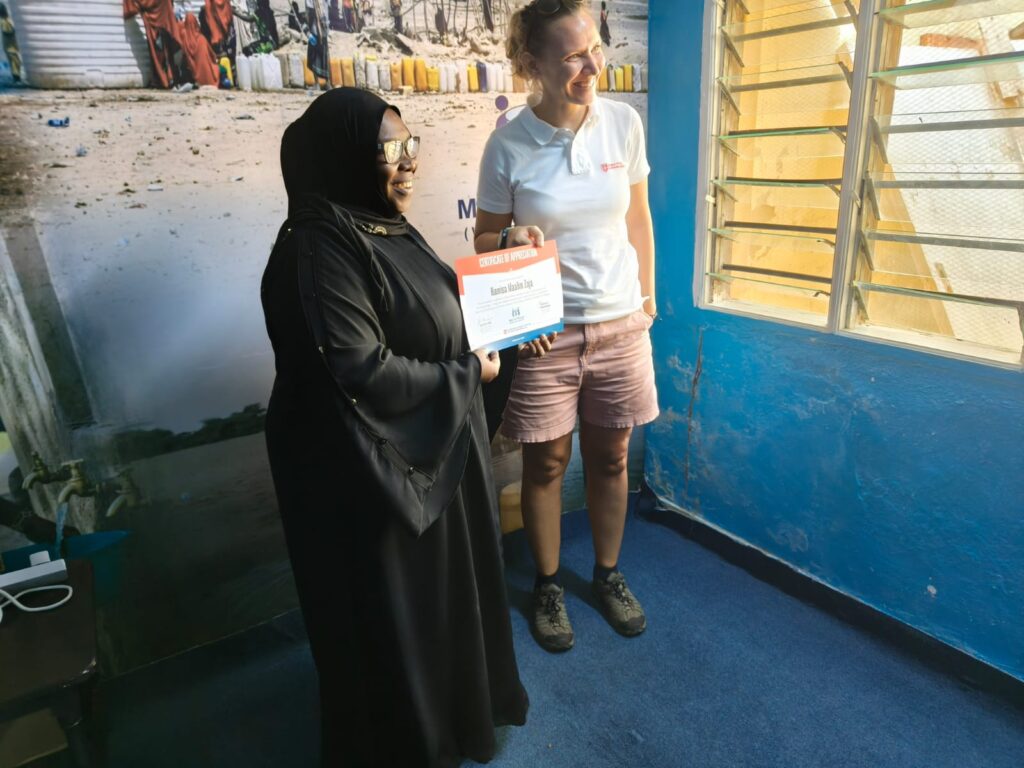
Next Steps
As the project progresses, the following activities are scheduled:
- Disability screening camps in May 2025 to reach more children
- Outreach campaigns to reduce stigma and promote early referrals
- Construction of an inclusive WASH facility at New Hope Lite Academy
- Parent support groups to be formed in collaboration with local churches and youth groups
- Documentation of success stories and lessons learned for policy influence
Conclusion
The Social and Educational Integration for Children with Disabilities in Bogobogo is more than a pilot project—it is a blueprint for disability-inclusive grassroots development in urban informal settlements. By combining expertise, community trust, and local leadership, the initiative is already transforming lives, one child at a time.
As CHPs and teachers continue to champion inclusion in Bogobogo, and as families begin to see their children not as burdens but as full participants in society, the long-term vision becomes clear: a community where all children—regardless of ability—can learn, play, grow, and thrive.
10 Frequently Asked Questions (FAQs)
1. What is the main goal of this project?
To promote inclusive education and healthcare for children with disabilities in Bogobogo informal settlement by empowering CHPs and teachers with knowledge and resources.
2. Who is involved in the project?
The project is a collaboration between APDK, Maji na Ufanisi (MNU), and Hungary Helps (HCSOM), alongside local government departments and community actors.
3. What is the role of Community Health Promoters (CHPs)?
CHPs identify, support, and refer children with disabilities within the community, while also sensitizing families and offering basic home-based support.
4. Which school is involved in the project?
New Hope Lite Academy, a local school in Bogobogo, is participating in the integration of children with disabilities.
5. What training did teachers and CHPs receive?
They were trained on disability awareness, inclusive teaching methods, identification and referral processes, and basic home-based interventions.
6. What kinds of disabilities does the project address?
It addresses a wide range, including physical, sensory, intellectual, and developmental disabilities.
7. Are assistive devices part of the project?
Yes. APDK will assess children and provide devices like wheelchairs, walkers, and hearing aids based on individual needs.
8. Is the project working with Mombasa County government?
Yes. Officials from Health, Education, and Social Services departments are active partners in planning and oversight.
9. How will the impact be measured?
Through referral tracking forms, baseline monitoring tools, and community feedback collected over time.
10. Will the project expand to other areas?
If successful, the model could be replicated in other informal settlements across Mombasa and Kenya.


